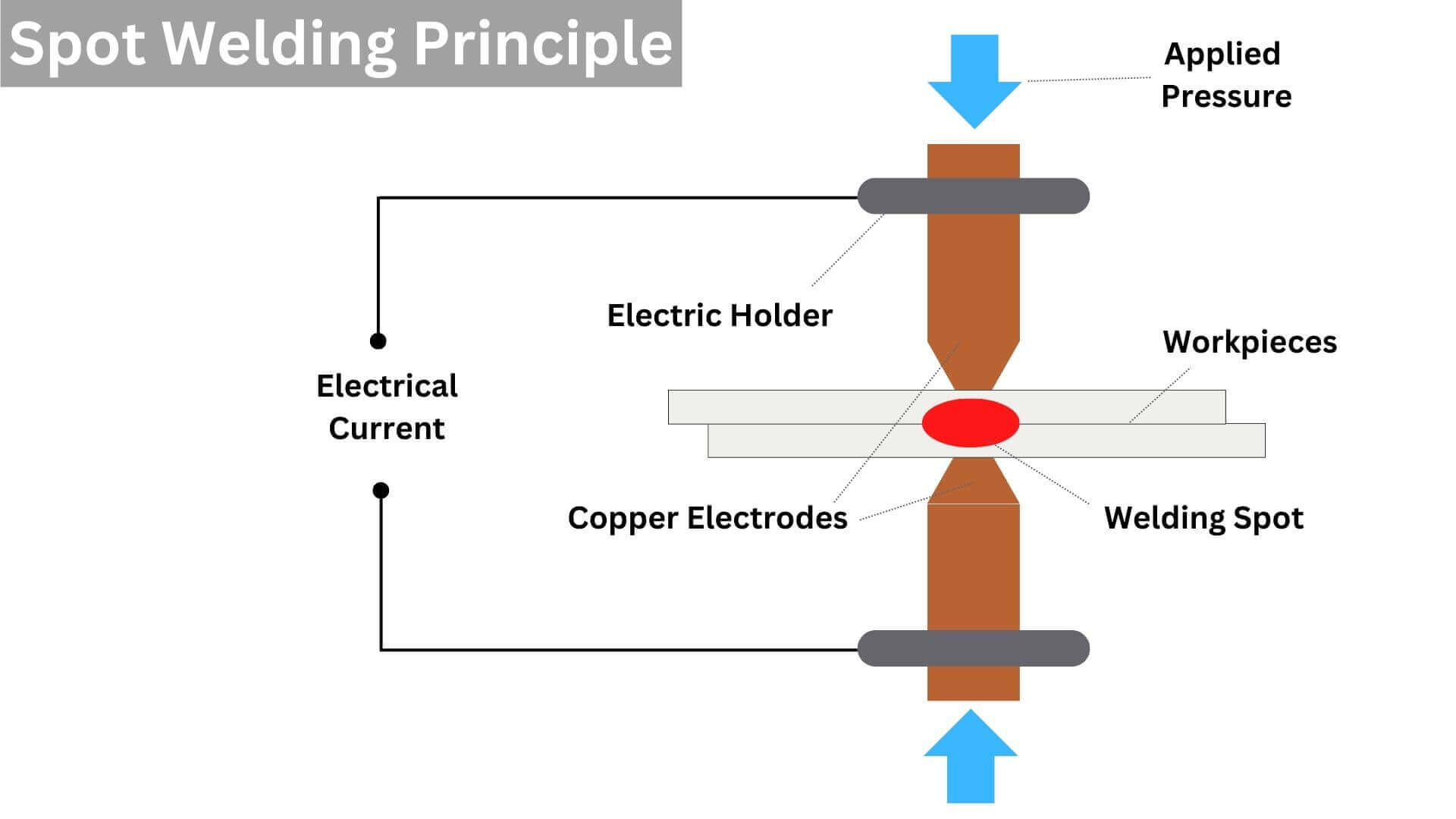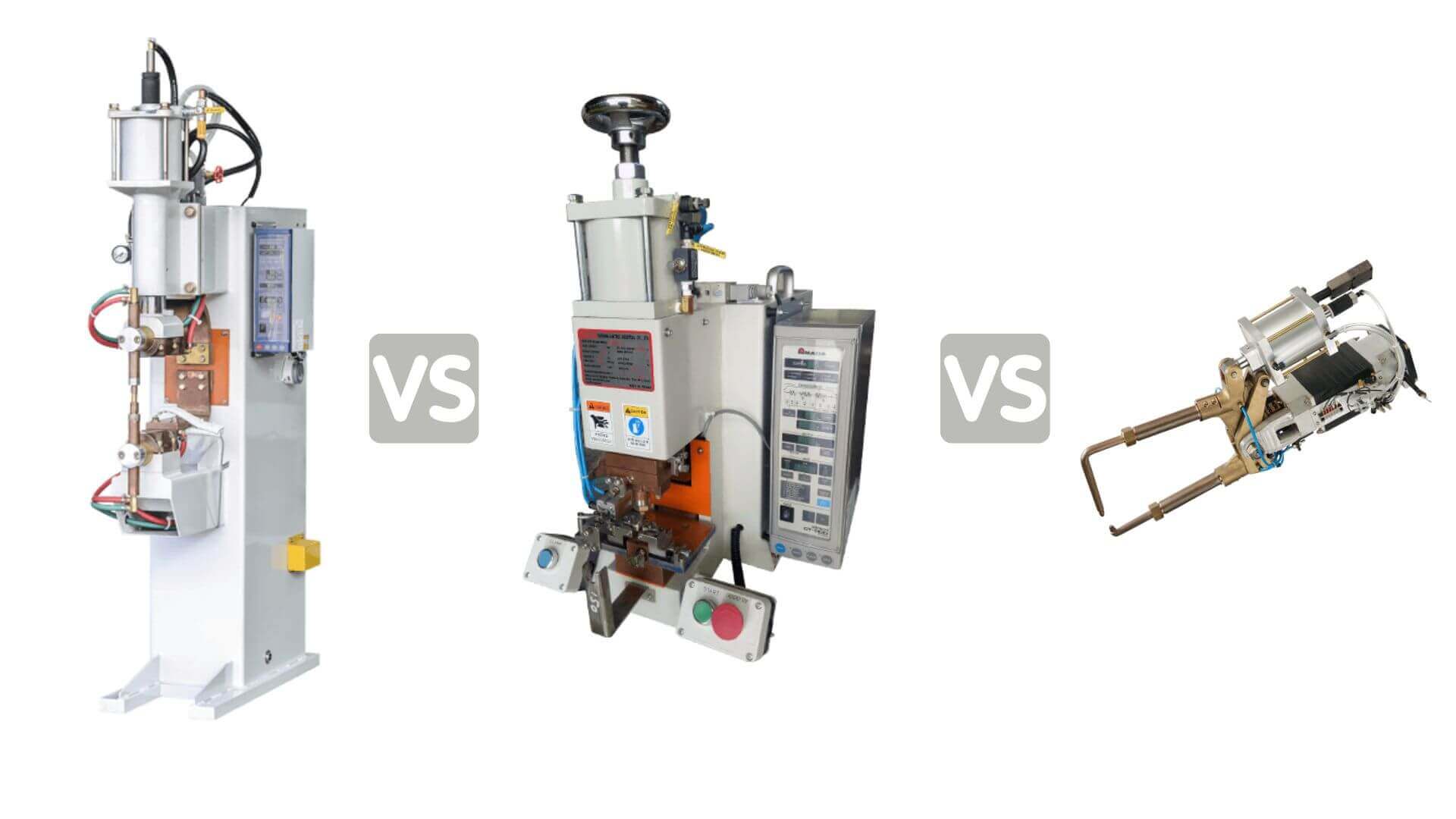2024 / 03 / 26
Spot Welding machines use a method called resistance spot welding to join overlapping metals between two electrodes using electrical resistance. Squeezing the workpieces between the electrodes applies pressure, and the passage of welding current through the resistive metals generates heat. This allows the materials to bind together and form a welding joint. Spot welding has its name as the current is applied precisely over a small area on the metal's surface. The resistance spot welding equipment can be in the form of stationary or bench-type welding machines, portable spot or robotic welding guns, and multi-head spot welding machines designed for different applications. Here at Dahching we have a wide range of spot welding machines and resistance welding equipment to choose from.

Three Phase DC Inverter Stationary Spot Welder
Resistance spot welding is a type of welding that generates heat at the interface of two metal sheets by using electrical resistance. The heat generated by the resistance to the flow of electricity melts the metal and forms a weld where the two sheets come into contact. This procedure is typically carried out with the aid of a specialized welding machine that applies pressure to the sheets in order to keep them in place and control the flow of electricity via the resistance welding process. The current is applied under a controlled force through the electrodes. The diameter of the electrode in contact with the workpiece determines the current density The resistance between the contact area layers is directly affected by the force applied. In practice, the force is adjusted so that heat is generated immediately in the contact area.

Spot Welding Principle
Despite concentrating heat at the workpiece joint (which creates the spot weld) being critical to the process, excessive heat marks at the electrode-workpiece interface are counterproductive.. As a result, it is critical that the cooling system removes heat as efficiently as possible from the point at which the workpiece contacts the electrode. An effective cooling system will keep electrodes in place to control current density.
Spot welding has the advantage of being a quick and efficient way to join two metal sheets together. The process can be automated, allowing for high production rates and weld consistency. Furthermore, spot welding is a clean and simple process that helps to reduce the production of welding fumes and other pollutants. As a result, it is an excellent choice for use in environments where air quality is a concern. Because spot welding is a low-cost welding process, it is appealing to many manufacturers. Another advantage is that the heat generated by the electrical current is controllable, which eliminates the risk of overheating. Furthermore, the welding area created by spots would not burn the unwanted parts of workpieces, ensuring optimal product quality. Spot welders are an excellent choice for manufacturers who want to maximize productivity.hin as 1/4 inch and connect multiple thin plates at the same time.
However, only a certain thickness of metal (5 to 50 inches) can be carried out by a particular spot welder. Most electrode holders only allow for minimal movement once the electrode is set in place. The size and shape of it directly affect the strength and size of the weld itself. Only when the electrode comes into contact with the metal does the relationship form. The spot welding will be weak if the current is not high or hot enough, or if the metal is not held together with enough force. The process's efficiency is determined by the intensity and temperature used, as well as the cleanliness of the electrodes and metal. Using a compact spot welder eliminates the difficulty of bonding electrodes to irregularly formed metals. The electrodes are attached to long cables to reach difficult-to-reach areas.
Welding equipment such as spot welders is frequently involved in the automotive, oil and energy, transportation, and aerospace industries where they are used to connect car parts, produce barrels and pipe for gas or water, or the construction of railways.
The primary distinction between benchtop and stationary spot welders is their portability and size. A benchtop spot welder is a small, portable welding machine that can be used on a workbench or table. It is typically used for smaller welding jobs or when the welder needs to move the machine around easily.
In contrast, a stationary spot welder is a larger, more powerful welding machine that is permanently installed in a workshop or factory. It is typically used for larger welding jobs or when the welder requires a more powerful machine to complete the welding task.

Stationary vs. Bench-type vs. Portable
Stationary-type spot welding machines are mostly foot pedal operated but they can also be dual palm initiated for safety reasons. Bench-type spot welders are widely used for welding thin sheets and small items such as electrical connectors, contacts, or terminals.
Overall, the best type of spot welder for a given situation will be determined by the welding task at hand, as well as the welder's size and portability requirements. Both benchtop and stationary spot welders have distinct strengths and capabilities, and selecting the appropriate type of welder can help ensure that the welding job is completed efficiently and effectively.
A portable welding gun is a type of welding equipment that is lightweight and portable. It usually has a handle or grip for the welder to hold on to, as well as a gun-like nozzle through which the welding wire is fed. The nozzle is aimed at the workpiece, and the welder initiates the welding process with a trigger. Portable welding guns are frequently used for on-site welding jobs or when a larger, stationary welding machine would be impractical. They are commonly used in the welding of metals such as steel and aluminum. Dahching has a wide range of gun sizes available for purchase, ranging from handguns to robotic guns. All of our portable welding guns have a well-designed cooling circuit that eliminates overheating issues.
Now, let us take a closer look at more specialized spot welding equipment.
Dahching also offers spot welding equipment that meets special manufacturing requirements. One example is our multi-spot welder series. A multi-spot welder is a type of welding machine that can perform multiple spot welds at the same time. It makes multiple welds at the same time by using multiple welding electrodes arranged in a pattern. Multiple welds can be made in a single pass, allowing for faster and more efficient welding.

Multi Spot Welder
Multi-spot welders are commonly used in the automotive and aerospace industries, where high-speed, high-precision welding is required. Multi-Spot Welder or Multi-Gun Spot Welders can be either direct welds, parallel welds, series welding, or indirect welds. You can contact our team to discuss tailor-made designs for your specific applications.
Another type of customized welding machine is the so-called XY Axis welder. This type of machine auto-feeds the parts from the magazine stack to the weld location and thus eliminates the need for a hand-held welding process. Depending on the model it can be suitable for spot weld sheet metal panels or wire mesh to frame or welding brackets or boxes with different dimensions.

XY Axis Spot Welder
As a Dahching customer, you will benefit from our welding expertise, no matter which type of welding machine you are looking for. Our machines have a variety of automation features, such as flexible clamping. If you are looking for a total solution we can also assist you with planning a whole welding equipment production line to create the perfect combination of robotic technology, and seam welding machines including the gun, fixtures, rollers, etc. Each customer of ours gets the individual solution they deserve. As a starting point, first choose the type of spot welding machine most suitable for your application: transversal (also called circular seam welders), longitudinal or universal for maximum flexibility.
Just click on the machine type you are
most interested in to learn more about it.
If you are more interested in other types of Spot
Welding Machine just click here.
製品情報、サービス案内は
お問い合わせフォームやメールより受け
付けております